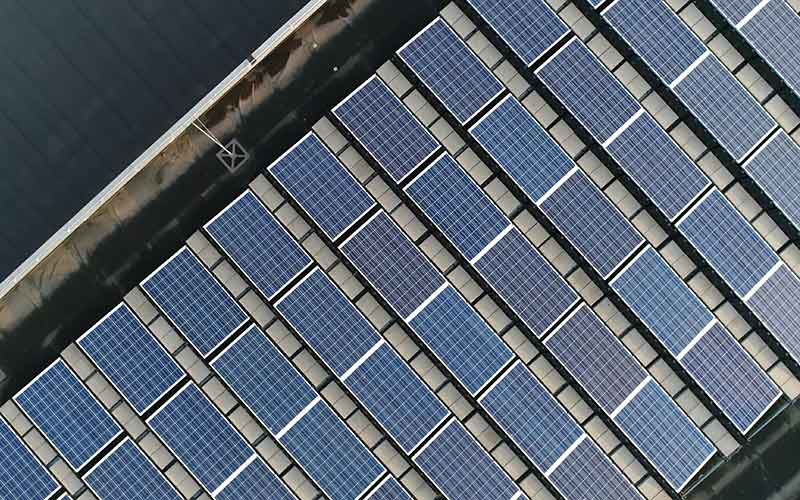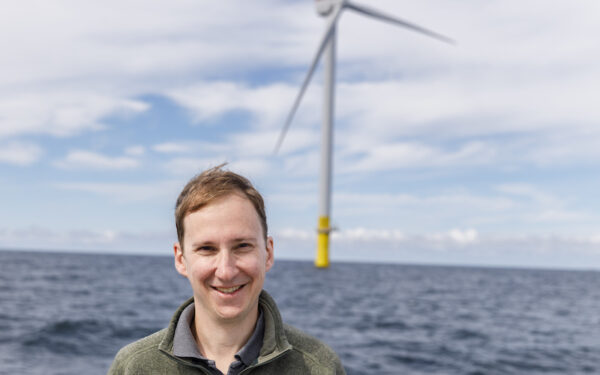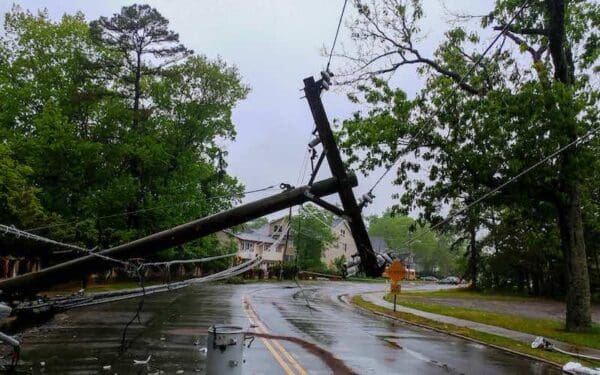
Rhode Island is grappling with where to best install solar panels – including looking at incentives for putting them on rooftops, parking lots, and brownfields. Photo: GLF Media/Shutterstock
In the past few years, the pace of solar energy development in Rhode Island has accelerated tremendously. As recently as 2011, the state had only 1.2 megawatts of installed solar capacity – enough to power just about a thousand homes.
Today, improvements in technology, state programs like Virtual Net Metering and Renewable Energy Growth, and Governor Raimondo’s push to procure 1,000 megawatts of clean energy by 2020 have driven significant growth in renewable energy projects. By 2018, Rhode Island had 66.6 megawatts of capacity across 4,344 projects, with proposals for 931 more projects totaling 519 megawatts. Increasing the use of clean, renewable sources of energy is a success that we should celebrate and build on, but that doesn’t mean it has come without challenges—including where to build new solar projects.
CLF is working with environmental organizations, solar developers, as well as state and local governments to confront that challenge head-on so we can balance the urgent need to cut our use of dirty fossil fuels with protecting our natural areas from overdevelopment.
Concern Over ‘Solar Sprawl’
Land use issues are especially sensitive in a state as small and densely populated as Rhode Island. Not surprisingly, the primary point of contention surrounding solar energy projects here is where to build them. While many Rhode Islanders support renewable energy development generally, individual projects have come under fire based on their locations and potential impacts on surrounding areas. Major solar projects have large footprints—between three and five acres per megawatt. They also are typically cheaper to build on previously undeveloped land.
These factors have pushed many projects towards the state’s rural communities, into forests and other natural areas. Cutting down trees and developing previously undisturbed land can destroy or fragment animal habitat, as well as reduce the forest’s ability to absorb carbon dioxide and filter stormwater pollution, among other harmful effects. Those who live close to proposed projects are often especially worried about losing the scenic and recreational value of their local green spaces. This has led to particular concerns about “solar sprawl” overtaking the state’s rural areas.
In Rhode Island, only very large energy facilities – those larger than 40 megawatts – are approved for siting at the state level. This means that the siting of solar projects is handled almost exclusively by cities and towns. This work poses a significant challenge for many communities, which may lack the resources or technical expertise to site projects appropriately. Many of our cities and towns still have no solar siting ordinances in place. In the wake of debates over controversial projects, some communities have even enacted complete moratoriums on solar projects, threatening to slow the state’s transition to clean energy.
Moving Towards Responsible Siting
The challenge facing Rhode Island—and many other states grappling with scaling up solar energy—is balancing the critical need to address the crisis of climate change with the responsibility to protect and manage our forests and other areas of environmental concern. Part of the solution is making sure that laws and processes are in place to ensure responsible siting. To that end, the state Office of Energy Resources has worked to develop a model solar siting ordinance and guidance documents with input from groups including CLF. It’s also vital that we create incentives that stimulate solar development in desired locations – places like rooftops, parking lots, and brownfields. The Office of Energy Resources has taken some initial steps in this direction and has drafted solar siting legislation – currently before the General Assembly – with input from CLF, other environmental groups, renewable energy developers, cities and towns, and farmers.
Failing to think carefully about where we build can cause unnecessary harm to local habitats and even damage public support for renewable energy. Solar has a critical role to play in Rhode Island’s energy future. It’s vital that its contribution to the state’s energy mix continue to grow if we are to meet the state’s goals to cut carbon pollution and prevent the worst impacts of climate change.



